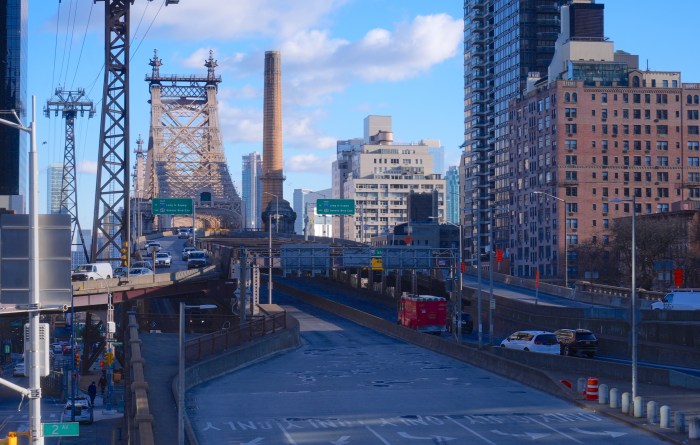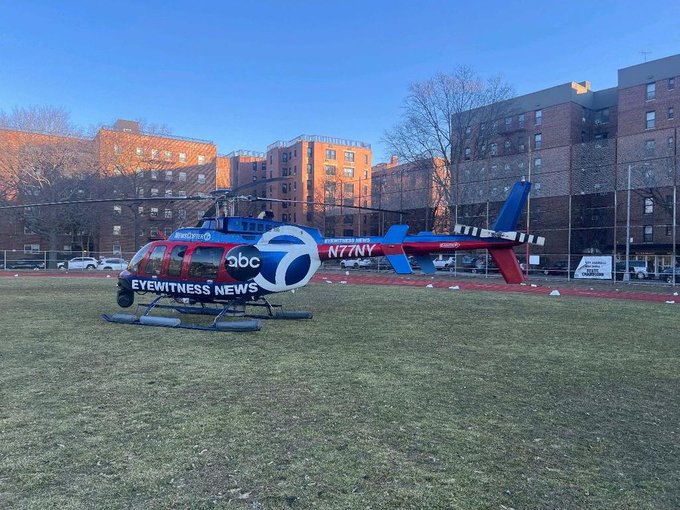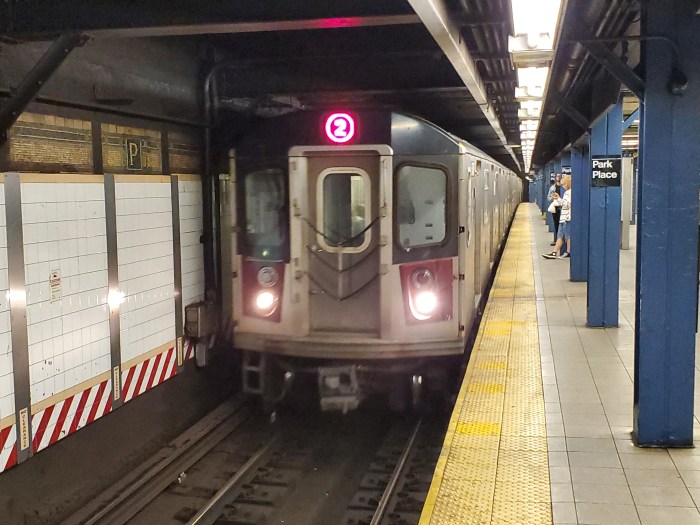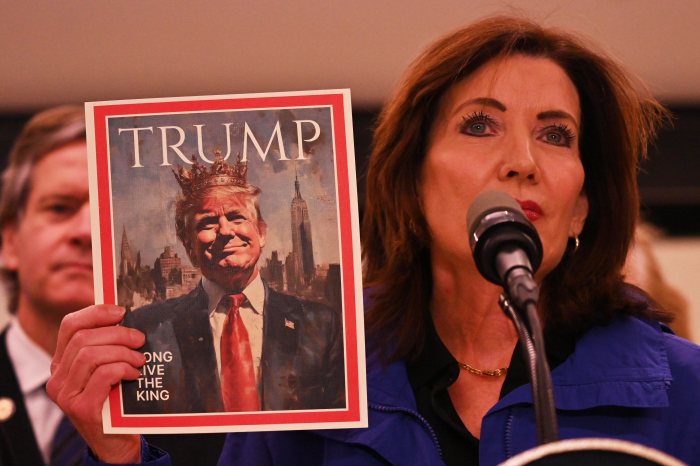The future of the subway car is wide open.
Drawing inspiration from London, Paris and Toronto, a majority of the next fleet of subway cars — 750 out of a total 1,025 cars — will feature open gangways to allow for passengers to move freely from one end of the train to the other.
They will also be equipped with digital route signage, split hand poles and wider doors, which the MTA estimates will cut train waiting times at stations by one third.
Gov. Andrew Cuomo and top MTA brass on Monday unveiled new details on both the next fleet of subway cars and the planned renovations at 31 subway stations across the system.
The agency hopes the improvements will play a key role in addressing a dire and growing capacity problem.
“Now, the MTA system itself was designed at a much, much different time. For a fraction of the number of people. Literally a fraction,” Cuomo said at the Transit Museum in Downtown Brooklyn.
“The challenge with the MTA is how do we increase that capacity with fundamentally the same design and then how do we do it quickly,” he added.
Subway entrances will be redesigned with overhangs and will include above-ground service announcements, countdown clocks, enhanced lighting and more visible map information. The painted black bars that serve as station barriers at the turnstiles will be swapped out for glass plates.
“There is no place that has a greater impact on the some 6 million people who ride the subway than our train cars and our stations,” said MTA Chairman Tom Prendergast. “On those days when we have delays and they have to spend more time in the subway station, we need to step it up in terms of the enhanced level of performance we have there.”
As announced earlier in January, the expansive renovations will bring six-month closures to each station. The MTA plans on issuing a request for proposals (RFPs) for the construction of its new subway car fleet later this week along with the first three RFPs for station renovations for the agency’s Prospect Avenue, 53rd Street and Bay Ridge Avenue stations in Brooklyn.
RFPs for the remaining 28 stations will be released over the course of the next twelve months. The first contract is expected to be awarded in the fall.
Subway ridership has soared by 22% (or some 500 million annual rides) since 2005, pushing the MTA network to its limits. On-time arrival across the subway system has dropped 2.3% between 2013 and June 2015, according to an April report from state Comptroller Thomas DiNapoli.
“You go around the country and then see these aging fleets and you can put two and two together about why service is so crappy,” said Gene Russianoff, staff attorney for the Straphangers Campaign, who supports the idea of open gangways. “These improvements are not enough, but it’s not entirely the MTA’s fault. The system has had a big expansion in ridership and dealing with that success is challenging.”
On the next fleet of subway cars, doors will be expanded from the standard 50 inches to 58 inches, which Prendergast said could shave about 10 seconds off the general rule of 30-second “dwell times” at stations.
“It would be nice if people always waited until everybody got off the train before they started to board, but that’s a little difficult in New York,” he added.
Straphangers on Monday welcomed the design changes. Carlos Ogando, a cook working in the Theater District, said that, “If the doors are wider, that will help. Sometimes it’s very hard to get in,” as he boarded a No. 2 train from 42nd Street.
“I have people visiting from California and they’re shocked that these stations have remained unchanged for so long,” said Amber Laign, an Upper West Side message therapist, who added that she’d like to see better ventilation through stations and subway cars.
The MTA plans to first roll out 10 prototype subway cars with the open-ended design to ensure that there are no issues before ordering the remaining 740 cars to replace trains along the A line. Another batch of 275 conventional cars will be divvied up, with 60 replacing the Staten Island Railway fleet and the other 215 bound for subway use. Timelines for the new cars are not yet clear.
All new cars will feature the state’s blue and gold accents, similar to the paint job on the new buses that began rolling out in Queens earlier this year. It’s an imprint from Albany and Cuomo, who has held three MTA-related news conferences since the passage of the MTA’s long-delayed, $27 billion capital program at the end of May.


































